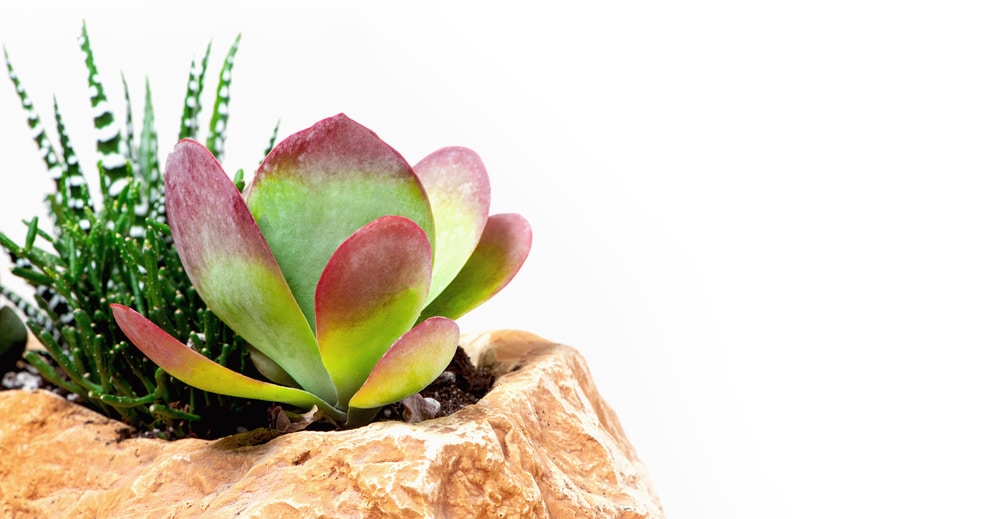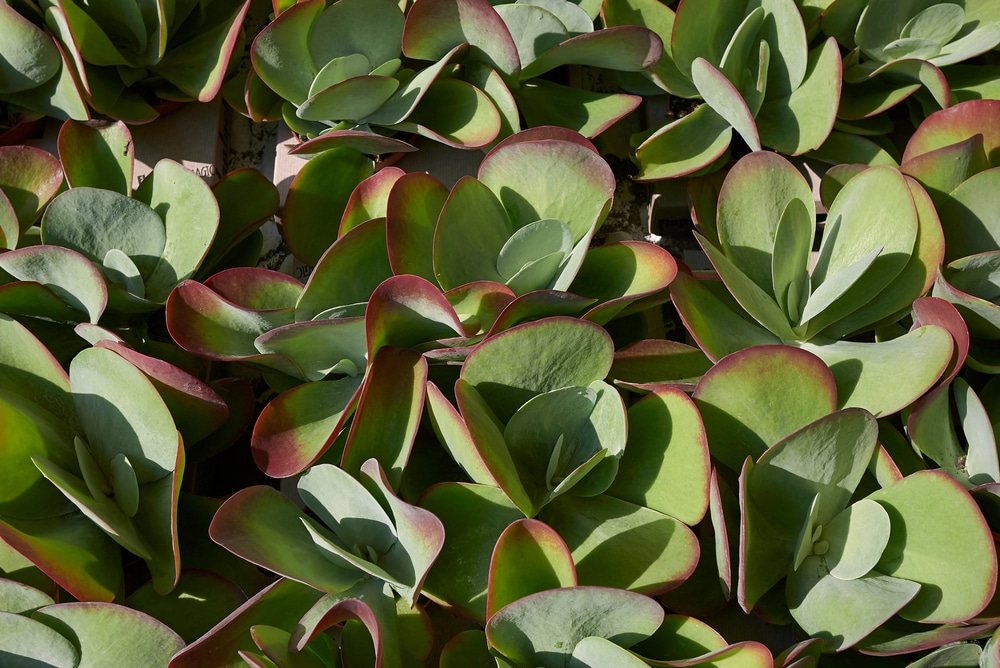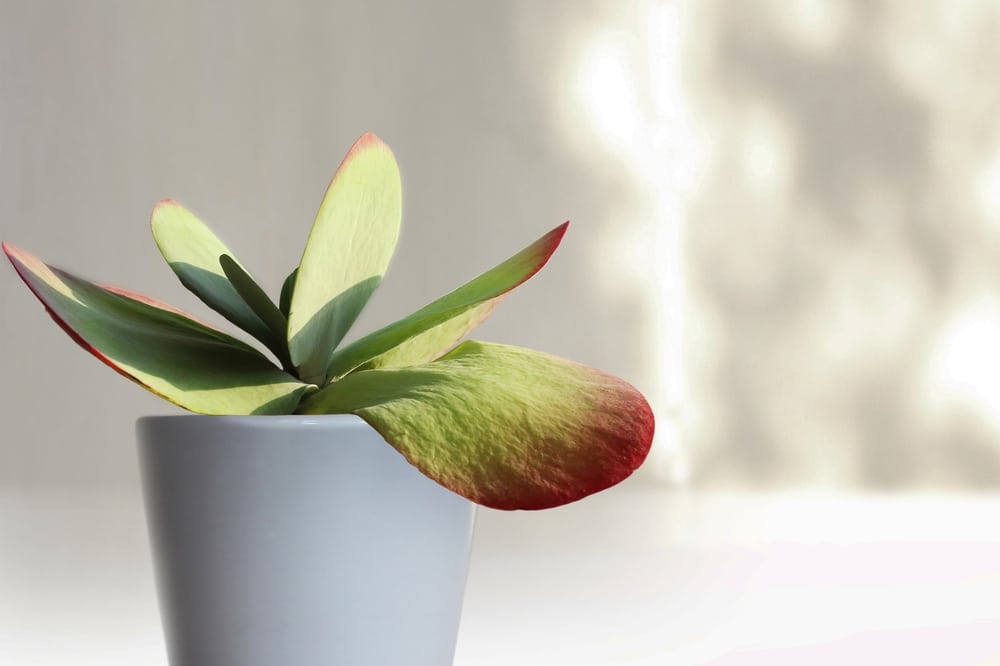Kalanchoe thyrsiflora, more commonly known as Paddle plant or Dessert cabbage, is a beautiful and interesting succulent native to South Africa. It gets its name from its large, flat leaves arranged in a rosette shape. The leaves are a deep green color with red margins.
Kalanchoe thyrsiflora is a popular houseplant, and it is easy to see why. The plant is low-maintenance and drought-tolerant, making it ideal for busy people or those who live in arid climates.
In addition, Kalanchoes are believed to be lucky, so it makes a great gift for someone who could use a little bit of good fortune in their life.

| Botanical Name | Kalanchoe thyrsiflora |
| Common Name | Bird’s Brandy, Flapjacks, Ice Sculpture, White Lady Kalanchoe, Paddle Plant, Dessert Cabbage |
| Plant Type | Evergreen succulent |
| Flower Color | Deep yellow |
| Size When Mature | up to 36 inches |
| Bloom Time | Late winter to early spring |
| Sun Requirements | Full sun/partial sun |
| USDA Hardiness Zones | 10 to 12 |
| Soil PH Range | 6.1 – 7.3 |
| Soil Type | Sandy, well-drained |
| Water Needs | Low |
| Native Area | Botswana, South Africa, Lesotho, and Swaziland. |
What you Need to Know About Kalanchoe thyrsiflora
The Kalanchoe thyrsiflora is a member of the Crassulaceae family and is closely related to other succulent plants such as Sedum and Echeveria. It is often interchanged with Kalanchoe luciae.
Telling them apart while they are still young is difficult. The best way to distinguish between the two is by their flowers, specifically their smell and color.
Kalanchoe thyrsiflora blooms in early spring, and its thick, lemon-yellow flowers are a real treat for the senses. The flowers are surrounded by leaves with a red tinge, giving off a strong, fragrant scent that is sure to please.
The flowers of this plant are not only beautiful, but they also grow on an 18″ tall spike, making them ideal for bees and other pollinators. Kalanchoe luciae’s flowers are a muted yellow and have very little to no fragrance. One might also notice that k. thyrsiflora’s leaves are slightly smaller and have a wax-like coating.
While Kalanchoe thyrsiflora is a stunning plant, it is important to note that all parts of the plant are poisonous if ingested. This means the plant should be kept away from homes with small children or pets who might be tempted to nibble on its leaves.
How to Care for Kalanchoe thyrsiflora
Here’s everything you need to know about growing and caring for a thriving Kalanchoe thyrsiflora.
Light
The flapjack plant’s leaves are typically green, but they can turn red if the plant is placed in full sun. The plant prefers partial sun to full sun but can tolerate some shade.
When kept as a houseplant, the flapjack plant should be placed in a location with plenty of indirect bright light. Direct sunlight coming through a glass window can burn the leaves, so it is best to avoid this. The plant is relatively easy to care for and is a great choice for those new to growing houseplants.
Water and Soil Needs
This is a hardy succulent that can thrive with minimal care. Although it does not need frequent watering, it is important to water the plant weekly or bi-weekly during periods of active growth.
Additionally, if the plant grows in full sun, it will need more water to prevent the leaves from drying. To water the Paddle plant, add water to the top of the soil until it is saturated.
Be sure to cover all parts of the plant, as uneven watering can lead to unhealthy growth. The plant should then be allowed to drain for several hours before being placed back in its original location.
When it comes to soil, the flapjack plant prefers a loose, well-draining mix. A cactus or succulent potting mix can be used, or you can make your own by mixing one part sand with two parts potting soil. If you choose to make your mix, add extra perlite or sand to ensure the soil drains well. It can tolerate soil with a ph of 6.1 to 7.3.
Temperature Requirements
If you’re looking for a plant that thrives in warm weather, Kalanchoe thyrsiflora is a great option. It’s comfortable in USDA zones 10 to 12. It’s also well-suited to room temperatures from 65 to 75 degrees Fahrenheit.
Fertilizer
This plant is not particularly fussy regarding fertilizer, but it will benefit from being fed during the spring and summer. It will not need to be fertilized during the fall and winter when growth slows. A balanced liquid fertilizer can be used, or you can choose a slow-release fertilizer designed for cacti and succulents.
Common Diseases
One of the great things about Kalanchoe thyrsiflora is that it is relatively resistant to pests and diseases. However, mealybugs and spider mites can be problematic if the plant is not kept clean.
Powdery mildew is also a possibility if the plant is not watered properly. Be sure to keep an eye out for any pests or diseases and take action immediately if you notice anything unusual.
Kalanchoe thyrsiflora Propagation
If you’re looking to add more Kalanchoe thyrsiflora plants to your collection, propagation is a great option. This plant can be propagated from leaf cuttings during the summer months.
To propagate from leaf cuttings:
- Choose a healthy leaf and cut it away from the stem.
- Allow the cutting to callous for a few days, then plant it in a pot with well-draining cactus or succulent soil.
- Water the cutting lightly and place it in a location with indirect bright light. The cutting should take root within a few weeks.

